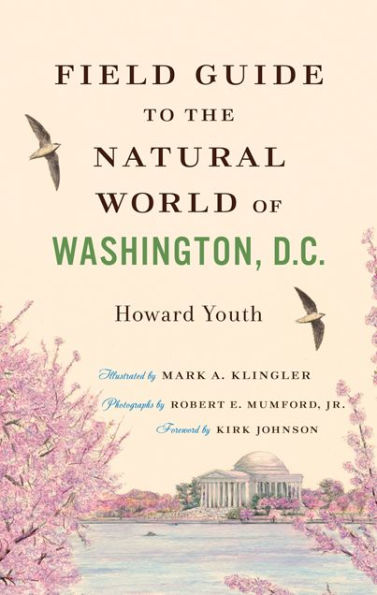Table of Contents
Foreword Kirk Johnsom 11
Acknowledgments 13
1 The Natural, and Not-So-Natural, History of Washington, D.C 19
2 Visiting D.C. Parks 27
3 The Parks 35
Northwest 37
Northeast 88
Southwest 102
Southeast 122
4 Animals 135
Invertebrates
Annelid
Farthworm 136
Arachnids
Brown Daddy Longlegs, or Brown Harvestman 138
Goldenrod Crab Spider 140
Rabid Wolf Spider 140
Myriopods
Garden Millipede 142
Garden Centipede 142
Insects
Common Eastern Firefly 144
Lady Beetle 144
Honeybee 146
Eastern Carpenter Bee 146
Eastern Yellow Jacket 147
Eastern Cicada Killer 148
Annual Cicada 150
Asian Tiger Mosquito 150
Common Green Darner 152
Eastern Forktail 152
Eastern Amberwing 152
Polyphemus Moth 154
Eastern Tent Moth and Eastern Tent Caterpillar 154
Cabbage White Butterfly 156
Mourning Cloak Butterfly 156
Eastern Tiger Swallowtail 158
Spicebush Swallowtail 158
Monarch 160
Crustaceans
Common Pillbug 162
Rough Sowbug 162
Crayfish 164
Vertebrates
Fish
Common Carp 166
Channel Catfish 168
Bluegill 170
Largemouth Bass 170
Amphibians
Redback Salamander 172
American Toad 174
Bullfrog 176
Spring Peeper 178
Reptiles
Snapping Turtle 180
Eastern Painted Turtle 182
Northern Water Snake 184
Black Rat Snake 186
Birds
Double-crested Cormorant 188
Canada Goose 190
Mallard 192
Wood Duck 194
Ring-necked Duck 196
Hooded Merganser 198
Great Blue Heron 200
Black-crowned Night-heron 202
Red-tailed Hawk 204
Osprey 206
American Coot 208
Ring-billed Gull 210
Mourning Dove 212
Chimney Swift 214
Downy Woodpecker 216
Red-bellied Woodpecker 218
Northern Flicker 220
Pileated Woodpecker 222
Eastern Kingbird 224
Blue Jay 226
Carolina Chickadee 228
Tufted Titmouse 230
White-breasted Nuthatch 232
Carolina Wren 234
American Robin 236
Gray Catbird 238
Northern Mockingbird 240
Yellow Warbler 242
Yellow-rumped Warbler 242
Common Yellowthroat 245
Red winged Blackbird 246
Common Grackle 248
European Starling 250
House Sparrow 252
Dark-eyed Junco 254
Northern Cardinal 256
House Finch 258
American Goldfinch 260
More D.C. Birds 262
Mammals
Northern Raccoon 268
Eastern Chipmunk 270
Eastern Gray Squirrel 272
Woodchuck (Groundhog) 274
Eastern Cottontail 276
White-tailed Deer 278
More D.C. Mammals 280
5 Plants 283
Aquatic Plants
Common Cattail 284
Common Reed 286
Wildflowers
Red and White Glover 288
Common Milkweed 290
Common Mullein 292
Dandelion 294
Spotted or Orange Jewel weed 296
Trees
Eastern White Pine 298
Virginia Pine 298
Eastern Redcedar 300
Ailanthus 302
American Elm 304
American Beech 306
Sugar Maple 308
Red Maple 308
Norway Maple 310
Sassafras 312
Boxelder 312
Willow Oak 314
Chestnut Oak 314
Eastern White Oak 316
Northern Red Oak 316
Pin Oak 318
Ginkgo 320
Crape-Myrtle 322
White and Red Mulberry Trees 324
Eastern Redbud 326
Sweetgum 326
American Sycamore 330
Tuliptree 332
Southern Magnolia 334
Weeping Willow 336
Black Cherry 338
Yoshino Cherry 340
Flowering Dogwood 344
American Holly 346
Native Shrubs
Spicebush 348
Mapleleaf Viburnum 348
Arrow wood Viburnum 348
Nonnative Shrubs
Bush Honeysuckle 350
Wine berry 350
Multiflora Rose 350
Native Vines
Poison Ivy 352
Virginia Creeper 352
Nonnative Vines
Porcelainberry 354
Japanese Honeysuckle 354
6 Mushrooms 357
Artist's Conk 358
Chicken Mushroom, Sulphur Shelf, or Chicken of-the Woods 360
Turkey Tail 362
7 Geology 365
Organizations 373
Bibliography 375
Index 381



